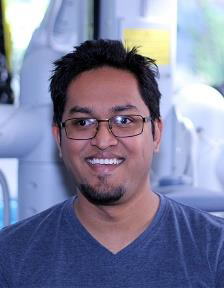Event
Seminar Presentation by Guest Lecturer Dr. Anand Rampadarath
Event Date(s): 04/07/2019
Location: Life Sciences Conference Room, Ground Floor, Natural Sciences Building

The Department of Mathematics & Statistics of the Faculty of Science & Technology, University of the West Indies invites you to attend a Seminar Presentation by Dr. Anand Rampadarath on the topic “Airway smooth muscle and airway wall coupled dynamics”.
Dr. Rampadarath is a Model Curator and Research Assistant at the Auckland Bioengineering Institute (ABI), University of Auckland in New Zealand.He holds a Ph.D. in Mathematics also from the University of Auckland in New Zealand, where he investigated the computational complexity associated with including rich muscle behaviour into mathematical models of airways in the lung. He is also a proud alumni of the UWI, St. Augustine, having earned his M.Sc. in Mathematics and a conjoint Bachelors in Mathematics and Physics.
Interested persons should register at the front desk in the Department of Mathematics & Statistics or email trisha.prince@sta.uwi.edu
Abstract
Primarily, asthma is a disease of reversible airway constriction which is characterized by airways that constrict too easily and too much. These processes are modulated via a layer of airway smooth muscle (ASM) which surrounds each airway in the lung, wherein its activation leads to airway narrowing and potentially, closure. As a result, understanding the interaction between the ASM and the airway wall is crucial to understanding the reversible airway obstruction central to asthma. Although cross-bridge theory is a well-studied representation of complex smooth muscle dynamics, and can be coupled to the airway wall, this comes at significant computational cost, even for isolated airways. Because many phenomena of interest in pulmonary physiology cannot be adequately understood by studying isolated airways, this presents a significant limitation.
In this talk I will present results associated with the coupled system consisting of the ASM and the airway wall. Specifically, results simulating airway closure for isolated and branched airways will be presented as well as qualitative agreements to in vitro experiments investigating Deep Inspirations. These results were derived from a systematic reduction of the cross-bridge PDEs to ODEs using the distribution moment (DM) approximation of Zahalak (1981). This reduced ODE system was also shown to be less computationally intensive than the original PDE system whilst retaining the macroscopic characteristics of ASM behaviour.
This work represents a viable option for the inclusion of rich ASM dynamics in whole lung in silico models in future studies.
Admission:Free to staff and students
Open to: | Staff | Student |
CONTACT
Marketing and Communications Department
- Tel.: (868)-662-2002 ext.2013/2014
- Email: marketing.communications@sta.uwi.edu

